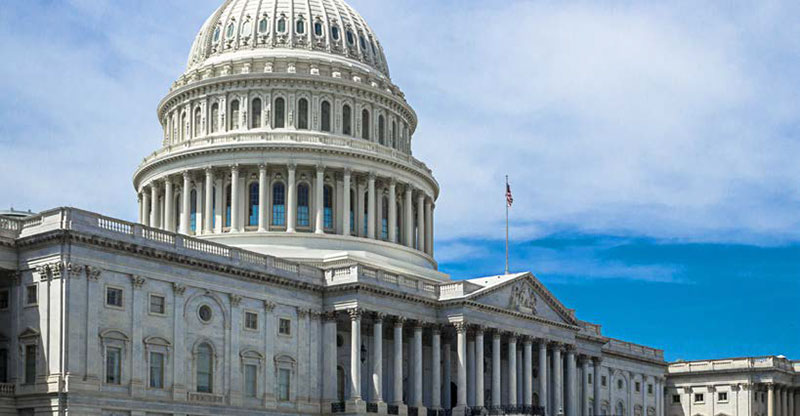
Carolyn Smith, John Hickman, Ted Schroeder and Scott Harty, Alston and Bird, LLP
The Coronavirus Aid, Relief, and Economic Security Act, signed into law March 27, 2020, contains significant economic relief opportunities for small businesses during the COVID-19 public health emergency. This article provides an overview of new loan opportunities and tax relief provisions of interest to small employers.
Please note: As you read, please bear in mind that even with all of the details presented in the legislation and highlighted here, there will be more details to come from the federal agencies tasked with implementation of these programs. This advisory will answer many questions but not all that you may have. Over time, there will be more clarity and further updates will be provided.

Expanded small business loan opportunities
The Small Business Administration is the primary federal agency that supports small businesses and entrepreneurs. Through the CARES Act, the SBA expanded their existing program to create the following new programs to help businesses through difficulties related to the COVID-19 national health emergency.
Paycheck Protection Program
The new Paycheck Protection Program is an expansion of the SBA’s traditional 7(a) loan program. PPP loans are intended to provide an incentive to qualifying employers to keep employees on the payroll and rehire employees who have already been laid off. PPP loans are available for the coverage period of Feb. 15 through June 30, 2020. The loans are forgiven if used to maintain payroll at precrisis levels during the eight weeks following disbursement of the loan. PPP loans will be available through financial institutions, rather than directly from the SBA. Ask your local bank or lending institution if they are a certified 7(a) lender.
Eligibility: PPP loans are available to a broader group of businesses than traditional 7(a) program loans, as summarized below:
Loan amount: In general, the loan amount is 2 1/2 times (250%) the average total monthly payroll costs during the year preceding the application plus any amounts loaned to the recipient under the Economic Injury Disaster Loan program this year, subject to a maximum dollar cap of $10 million.
Repayment and loan forgiveness: PPP loans will have complete payment deferral, including principal, interest and fees, for at least six months and up to a maximum of one year.
Applicants can receive loan forgiveness for their payroll costs, rent and debt costs incurred and payments made during the eight-week period following the origination of the loan if they maintain the same number of full-time equivalent employees, or FTEs, during the covered period of Feb. 15-June 30, 2020. The loan forgiveness is scaled down proportionally with any decrease in FTEs during the covered period or if any salaries are decreased by more than 25%. However, full forgiveness can be extended if previously laid off employees are hired back by June 30, 2020.
Payroll costs generally include the following sum of payments for employees:
Payroll costs also include the payments to or income of a sole proprietor or independent contractor, subject to an annualized limit of $100,000, prorated for the coverage period.
Note: Employers that receive PPP loans do not qualify for the refundable employee retention tax credit described below. Further, employers with a PPP loan that is forgiven aren’t eligible for the deferral of payroll taxes described below.
SBA clarification for Paycheck Protection Program on April 3, 2020.

Modified Economic Injury Disaster Loan Program
The CARES Act makes a number of modifications to the SBA’s 7(b) loan program, also known as the Economic Injury Disaster Loan Program to make it simpler and available to more businesses. This includes:
Expanded unemployment assistance for independent contractors
The CARES Act creates a temporary Pandemic Unemployment Assistance Program through Dec. 31, 2020, to provide payment to those not traditionally eligible for unemployment benefits, including self-employed, independent contractors, those with limited work history and others who are unable to work as a direct result of the coronavirus public health emergency. Individuals who receive unemployment assistance under this program also receive an additional $600 per week for up to four months.

Tax relief
Employee retention refundable tax credit
The employee retention credit is a refundable tax credit for employers of any size if either (a) business operations were fully or partially suspended due to orders from an appropriate government agency due to COVID-19 or (b) the employer’s gross receipts for a calendar quarter in 2020 are less than 50% of the gross receipts for the same quarter in 2019.
Delay of payment of employer share of social security taxes
Employers of any size may delay payment of their share of social security taxes (6.2% of covered wages) through the end of 2020. Half of the deferred amount is due Dec. 31, 2021, and the rest is due Dec. 31, 2022. Self-employed individuals, such as independent contractors and sole proprietors, may similarly defer one-half of their self-employment taxes.
Note: This deferral is not available to businesses that receive PPP loan forgiveness or who have had received forgiveness of a loan provided under the Treasury Program Management Authority in the CARES Act.
Other business tax changes
The CARES Act includes a number tax provisions for businesses of all sizes that are generally aimed at helping businesses with cash flow, including the following:

Delay of income tax filing and payment
The IRS delayed the income tax filing and payment date for any income tax return or tax due April 15, 2020, to July 15, 2020. No penalties or interest will be imposed if taxes owed are paid by July 15. The IRS also provided questions and answers addressing how the filing date delay applies to other provisions. At this point in time, this delay does not apply to any returns or taxes due on a date other than April 15, 2020.
Resources
Information regarding COVID-19 and the new provisions in the CARES Act may change. The following websites are helpful places to look for updated information:
Conclusion
Individually and collectively as a nation, we are all making our best efforts to move forward in the current COVID-19 public health emergency and the related economic situation. Policy makers responded with a variety of new provisions to assist during these difficult times. The federal agencies tasked with implementing these provisions will publish further rules and guidance in the near future. The best options to take (e.g., loans vs. tax credits), may vary for each situation. As always, employers should consult with their own advisers as to their particular circumstances.
The information above is provided for general informational purposes and is not provided as tax or legal advice for any person or for any specific situation. Employers and employees and other individuals should consult their own tax or legal advisers about their situation. Aflac herein means American Family Life Assurance Company of Columbus and American Family Life Assurance Company of New York.